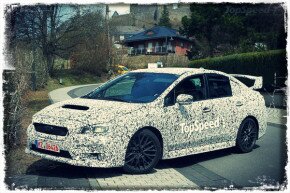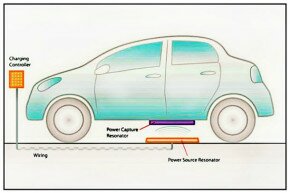TUM Visio.M – Full-size remote control electric car
 |
Visio.M is a remote-control electric vehicle developed by Technische Universität München (TUM), Germany, that could travel along city streets with no one in them at all, their operator located somewhere far away. Scientists at the TUM believe that full-size remote control cars could be hitting the roads within the next five to ten years.
As part of their project, the engineers equipped the Visio.M electric car with six video cameras, five of which are mounted on the back of the rearview mirror (facing forwards or to the sides) and one of which is looking out the rear window. Together, they provide a 360-degree view of the car’s surroundings. All functions can be activated via a central control panel. The video images are fed into a computer before being encoded and sent to the driver at the remote operator station via LTE.
The station resembles a driving simulator, equipped with a steering wheel, instrumentation panel and pedals. The operator views the road on three huge monitors that display images from up to five cameras facing to the front and to the sides. The cameras are positioned in the middle of the windscreen behind the rear view mirror. Another camera relays images from behind the car.

The force feedback steering wheel uses actuators to simulate driving forces and thus delivers an extremely realistic driving experience. The brakes are equally realistic – the pedal in the operator station reacts in the exact same way as the pedal in a car. In addition to the 360-degree view of the car’s environment, the operator can also hear exactly what is going on inside the car thanks to Dolby 5.1 technology.
The scientists claim that the system isn’t very expensive, and that the LTE networks in many cities are already sufficient to transmit all the required video, audio and control data in real time. They add that slower UMTS networks could also work, as they would produce a transmission lag of less than half a second – which admittedly could still make a huge difference in accident avoidance.
In the event of a bandwidth bottleneck or a sudden connection failure, the vehicle automatically brakes until it reaches a standstill. Despite the technical feasibility, however, there are still a number of legal hurdles to be overcome before this technology can be deployed on regular roads.

Now, someone might ask, what would be the point of a passenger-less car? As a couple of examples, the scientists suggest that the technology could be used to deliver rental cars or vehicles used in car-sharing programs to members’ homes, plus it could be applied to city-center parking services – you just get out when you reach your downtown destination, and your car proceeds to head off to the parking garage on its own.















Leave a Reply